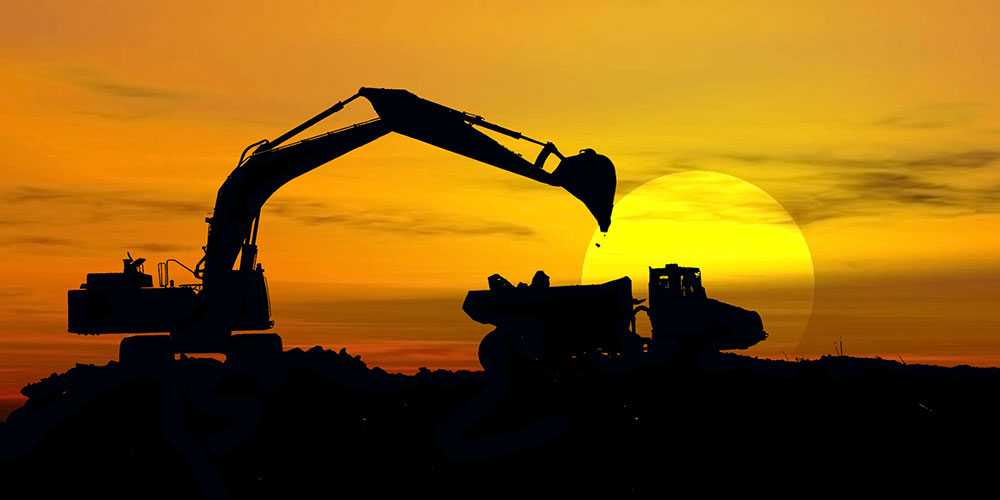Leading Consulting Civil Engineering Companies for Framework Projects
Wiki Article
Exactly How Consulting Engineers Enhance Geotechnical Design Projects: Insights Into Their Expertise, Methodologies, and Collaborative Approaches
Consulting engineers are pivotal in improving geotechnical engineering projects, using their specialized understanding to browse the intricacies of subsurface conditions. Their methods encompass a series of site investigation methods, including Standard Infiltration Examinations (SPT) and Cone Infiltration Examinations (CPT), which inform important choices throughout the style and building phases. Additionally, their collective methods foster communication among varied job stakeholders, ultimately forming the task's trajectory. As we analyze the complex functions these experts play, it becomes clear that their payments extend past technological know-how, triggering a closer check out the ramifications for job success.Role of Consulting Engineers
The expertise of seeking advice from designers in geotechnical engineering is basic to the successful implementation of building and construction projects. These specialists play a pivotal role in evaluating dirt and rock residential or commercial properties, which are crucial variables affecting design and building and construction choices. By conducting detailed site investigations, consulting designers gather necessary data that educates the layout process, ensuring projects are built on secure and ideal ground.Consulting designers likewise offer vital understandings right into danger administration (geotechnical geologist). They determine prospective geotechnical risks, such as landslides, soil liquefaction, and settlement concerns, allowing stakeholders to carry out reliable reduction techniques. Their know-how help in optimizing foundation layouts, which can cause considerable expense savings and boosted security
Additionally, speaking with engineers work as a crucial link between task owners, architects, and contractors. Their capacity to equate complicated geotechnical data right into actionable referrals promotes cooperation and assists in informed decision-making throughout the project lifecycle. This multidisciplinary approach not just enhances task efficiency yet likewise ensures conformity with regulatory criteria and best methods.
Key Methods in Geotechnical Engineering

One primary approach is website examination, which includes performing area tests and lab evaluations to collect information on subsurface problems. Methods such as Requirement Infiltration Screening (SPT) and Cone Infiltration Screening (CPT) are extensively made use of to evaluate soil stratigraphy and strength. Additionally, geophysical approaches, consisting of seismic and electric resistivity studies, give non-invasive ways to examine subsurface features.
An additional essential technique is mathematical modeling, which makes it possible for designers to replicate different situations and predict how soil-structure interactions will certainly act under various loading conditions. Finite Component Evaluation (FEA) is a typical method employed in this context.
Furthermore, the design of structures, preserving frameworks, and earthworks depends heavily on these methodologies - geotechnical geologist. By incorporating sophisticated analytical tools with field data, seeking advice from designers can create customized services that deal with particular job challenges, inevitably adding to the stability and safety and security of building and construction jobs
Importance of Dirt Analysis
Dirt evaluation functions as a foundational aspect in geotechnical design, offering important insights right into the physical and chemical homes of soil necessary for efficient building and construction planning. Recognizing soil qualities is critical for identifying its load-bearing capability, water drainage behavior, and capacity for negotiation or instability. Detailed soil examinations, consisting of tasting and laboratory testing, aid recognize parameters such as soil kind, dampness content, thickness, and shear strength.
These analyses notify the choice of ideal construction methods and products, inevitably influencing task safety and security and longevity. Natural soils may need various structure layouts contrasted to granular dirts, demanding customized design solutions. Soil analysis aids in identifying contaminants that could pose threats to human wellness or the consulting civil engineering companies setting, permitting for the advancement of mitigation strategies.
Incorporating soil evaluation right into the early stages of task growth assists to lessen unpredicted obstacles, making sure that engineers can anticipate and resolve possible problems before they rise. By developing a thorough understanding of the website conditions, speaking with designers can maximize style efficiency and lower expenses, thus enhancing the total success of geotechnical engineering tasks.
Collective Methods in Projects
Effective geotechnical tasks frequently depend upon collaborative methods that combine varied expertise from numerous disciplines. Effective collaboration among getting in touch with engineers, geologists, environmental scientists, and construction specialists is vital for resolving complex challenges and maximizing task outcomes. By leveraging the special skills and knowledge of each staff member, jobs can gain from an alternative understanding of the website conditions, regulative needs, and design constraints.Routine interaction and interdisciplinary meetings help with the sharing of understandings and foster a culture of team effort. These collaborative initiatives make it possible for the identification of prospective dangers early in the task lifecycle, enabling timely reduction strategies. Moreover, integrating responses from stakeholders, consisting of local communities and regulative companies, makes certain that all perspectives are taken into consideration, enhancing project acceptance and compliance.
Additionally, the integration of advanced technologies, such as Geographic Details Systems (GIS) and Building Details Modeling (BIM), additional improves cooperation. These devices enable the real-time sharing of information and visualization of geotechnical conditions, promoting notified decision-making. Eventually, a collective technique not just enhances job execution but also lays the foundation for cutting-edge solutions to complicated geotechnical engineering challenges.
Impact on Task End Results

Consulting designers employ sophisticated techniques such as danger evaluation and anticipating modeling, which enhance the precision of task forecasts. Their capability to incorporate innovative modern technologies, like geotechnical instrumentation and information analytics, even more improves the design and construction procedures. Because of this, jobs experience enhanced performance, reduced expenses, and lessened hold-ups.
Additionally, cultivating effective communication and partnership amongst employee improves analytic capacities. When challenges occur, an unified front permits for speedy identification of services, stopping possible setbacks. Ultimately, the collective efforts of consulting engineers contribute to higher quality outcomes, making certain that tasks fulfill both governing criteria and customer assumptions.
Verdict

Report this wiki page